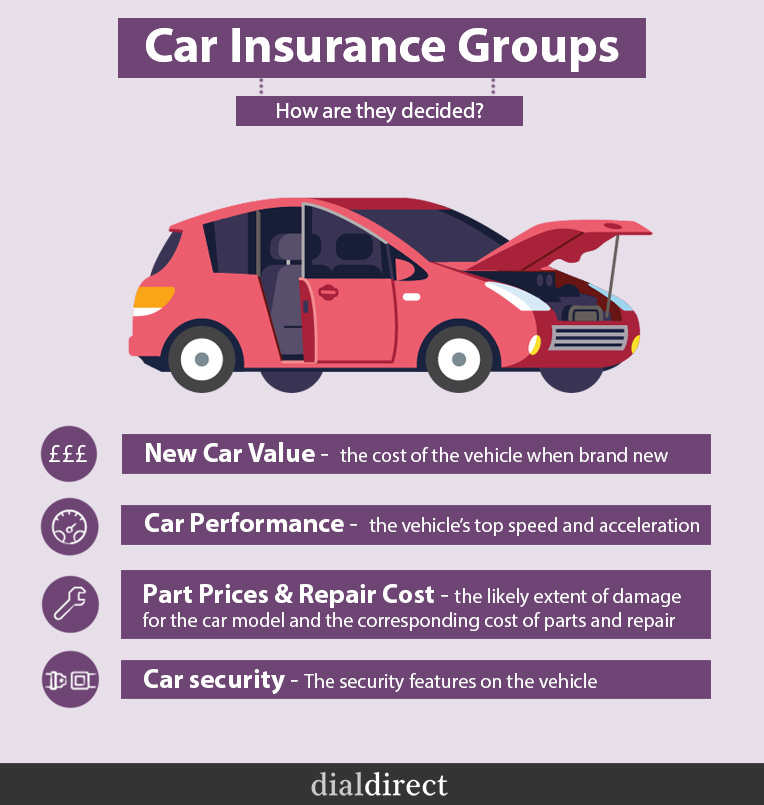Cars come in different shapes and sizes and insurance group ratings are one factor typically used by insurers to calculate your premium. Car insurance groups take into consideration the vehicle’s cost to repair, value when new and security to categorise it.
While it’s not compulsory for insurers to follow car insurance groups, they present a standardised way to categorise vehicles in accordance to price and risk. Not all insurers will choose to follow them, but they can provide a general indication towards insurance cost for prospective customers.
Insurance groupings are decided by the Group Rating Panel (members of the Association of British Insurers and the Lloyds Market Association), which is supported by Thatcham Research, who meet every month to classify new vehicles. There are 50 car insurance groups with 1 typically being the cheapest and 50 being the most expensive to insure. Cars in group 1 carry the lowest risk to an insurer. They’re often well-equipped with safety features, moderately priced, cheap to repair and have a lower performance.

How are car insurance groups decided?
The Association of British Insurers (ABI) hold a group rating panel every month where they assign a rating to each new model of car.
The factors the ABI take in account to do so are:
- New car value – The cost of the vehicle when brand new.
- Car performance – The vehicle’s top speed and acceleration.
- Part prices and repair cost – How much each part costs to repair, this factors in not just value of the part but also repair times, availability and labour costs. According to Thatcham, over half of all money paid out in motor insurance claims goes on repairing cars, so repair costs is a significant factor in car groups. Thatcham use a standard list of 23 commonly damaged parts for pricing.
- Car security – Theft is a common reason for car insurance claims, so a vehicle with excellent security could lower a vehicle’s car insurance group.
Security rating
Car insurance groups also have standard levels of security features for each group, the letter will appear alongside your group number rating and the higher the group means the higher level of security required.
- E – The vehicle’s security features exceed what is required for this type of vehicle, so it’s rating has been reduced
- A – Acceptable for this type of vehicle
- P – Provisional, there is not enough data during the time of launch to categorise the vehicle
- D – Doesn’t meet the security requirements for this type of vehicle, so it’s rating has been increased
- U – Unacceptable – a substantially lower standard vehicle than required
- G – Import – referring to an imported or specialist car which are not applied to the insurance group and security ratings.
While insurance groups aren’t the only factor considered for insurance, they can give you a guideline as to how much your insurance will cost. For more information and advice, read our helpful guide on car insurance.